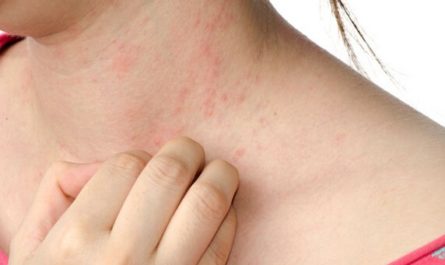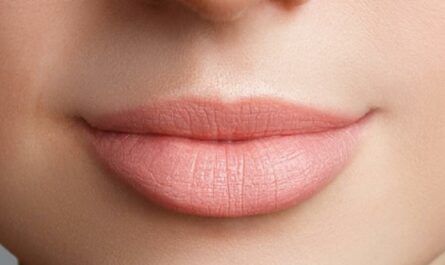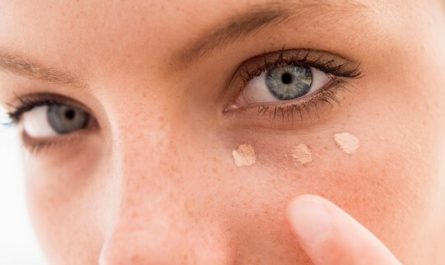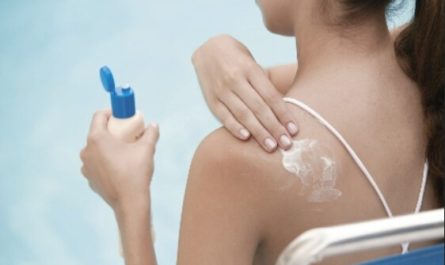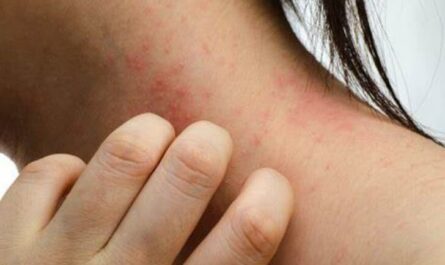Are you concerned about those pesky wrinkles above your lips? You’re not alone. Many people, especially as they age, start to notice fine lines and wrinkles forming around their mouths. These wrinkles are also known as perioral wrinkles or smoker’s lines. They can be caused by a variety of factors. But don’t worry, there are plenty of treatments available to help reduce the appearance of these wrinkles. In this article, we’ll explore 14 best effective treatments for wrinkles above the lips.
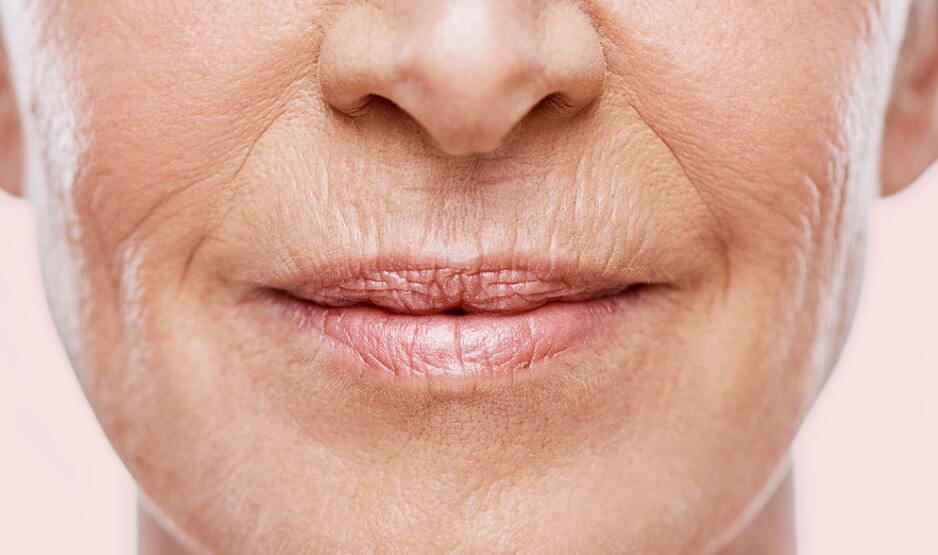
Causes of Wrinkles Above Lips
Before we dive into the various treatment options, it’s crucial to understand the underlying causes of wrinkles above the lips.
1. Aging
As we age, our skin naturally loses collagen and elastin, the proteins responsible for keeping our skin firm, plump, and youthful. This loss of structural support leads to the formation of wrinkles and fine lines. This is particularly true in areas that experience frequent movement, such as the lips and mouth.
2. Sun Damage
Exposure to harmful UV rays can accelerate the aging process by breaking down collagen and elastin fibers in the skin. The delicate skin above the lips is particularly susceptible to sun damage, as it is often overlooked when applying sunscreen. Over time, this damage can manifest as wrinkles, discoloration, and uneven texture.
3. Repetitive Facial Movements
Everyday facial expressions, such as smiling, laughing, and frowning, can contribute to the development of wrinkles above the lips. When we make these expressions, the skin creases in the same place repeatedly, eventually leading to permanent lines.
4. Smoking
Pursuing the lips to inhale cigarette smoke can cause the formation of vertical lines above the upper lip, hence the nickname “smoker’s lines.” Additionally, the toxins in cigarette smoke can damage collagen and elastin, further contributing to the development of wrinkles.
5. Dehydration
When our skin is dehydrated, it becomes more prone to wrinkling and creasing. Drinking insufficient water and consuming excessive amounts of caffeine or alcohol can lead to dehydration. This may exacerbate the appearance of wrinkles above the lips.
6. Genetics
Some individuals may be more genetically predisposed to developing wrinkles above the lips due to factors such as skin type, collagen production, and natural aging processes.
Now that we’ve explored the primary causes of wrinkles above the lips, let’s delve into the various treatment options available to address these concerns.
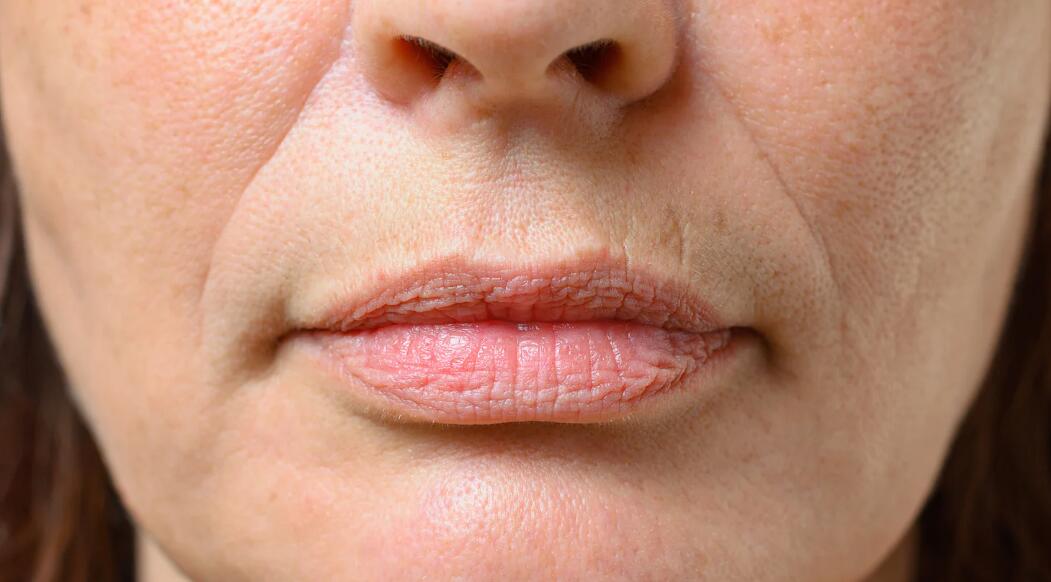
14 Best Treatments for Wrinkles Above the Lips
1. Protect Your Skin from the Sun
One of the most important things you can do to prevent and reduce wrinkles above your lips is to protect your skin from the sun. UV rays can break down collagen and elastin in your skin, leading to premature aging and wrinkles. Make sure to apply a broad-spectrum sunscreen with an SPF of at least 30 every day, even on cloudy days.
But don’t stop there – you should also take other precautions to protect your skin from the sun. Wear a wide-brimmed hat and sunglasses when you’re outside. Try to avoid spending too much time in direct sunlight, especially during peak hours (usually between 10 am and 4 pm).
If you do spend a lot of time outdoors, consider investing in sun-protective clothing. And remember, even if you’re wearing sunscreen, you should still reapply it every two hours.
2. Stay Hydrated
Keeping your skin hydrated is crucial for maintaining its elasticity and reducing the appearance of wrinkles. Make sure to drink plenty of water throughout the day. You should also consider using a humidifier in your home to add moisture to the air.
But how much water should you be drinking? The general recommendation is to drink at least eight 8-ounce glasses of water per day, but this can vary depending on your individual needs. If you’re exercising heavily or spending a lot of time in hot, dry weather, you may need to drink even more.
In addition to drinking water, you can also keep your skin hydrated by using a moisturizer that’s appropriate for your skin type. Look for a moisturizer that contains humectants like glycerin or hyaluronic acid. This can help to draw moisture into your skin and keep it there.
3. Use a Retinoid Cream
Retinoids, which are derived from vitamin A, are one of the most effective ingredients for treating wrinkles. They work by increasing collagen production and cell turnover. This can help to smooth out fine lines and wrinkles. Look for an over-the-counter retinoid cream or ask your dermatologist about prescription-strength options.
When using a retinoid cream, it’s important to start slowly and gradually increase your usage over time. Begin by applying a small amount of the cream every other night. If your skin tolerates it well, you can gradually increase to every night.
It’s also important to use a moisturizer in conjunction with your retinoid cream, as retinoids can be drying to the skin. And remember, retinoids can make your skin more sensitive to the sun. So it’s extra important to use sunscreen during the day.
4. Try a Hyaluronic Acid Serum
Hyaluronic acid is a powerful humectant that can hold up to 1,000 times its weight in water. When applied topically, it can help to plump up the skin and reduce the appearance of wrinkles. Look for a serum that contains hyaluronic acid and apply it before your moisturizer.
Hyaluronic acid is a great ingredient for all skin types, but it can be especially beneficial for those with dry skin. It can help to restore moisture to the skin and improve its overall texture and appearance.
When shopping for a hyaluronic acid serum, look for one that contains a high concentration of the ingredient (at least 1%). And don’t be afraid to layer it with other hydrating ingredients like glycerin or ceramides for even more moisture-boosting benefits.
5. Incorporate Antioxidants into Your Skincare Routine
Antioxidants like vitamin C and vitamin E can help to protect your skin from free radical damage. This can contribute to the formation of wrinkles. Look for skincare products that contain these ingredients, or consider taking an oral supplement.
Vitamin C is a particularly powerful antioxidant that can help to brighten the skin, even out skin tone, and stimulate collagen production. Look for a vitamin C serum that contains L-ascorbic acid, which is the most stable and effective form of the ingredient.
Vitamin E is another great antioxidant that can help to nourish and protect the skin. It’s often found in moisturizers and other hydrating products.
In addition to using skincare products that contain antioxidants, you can also incorporate them into your diet by eating plenty of fruits and vegetables. Some of the best sources of antioxidants include berries, leafy greens, and citrus fruits.
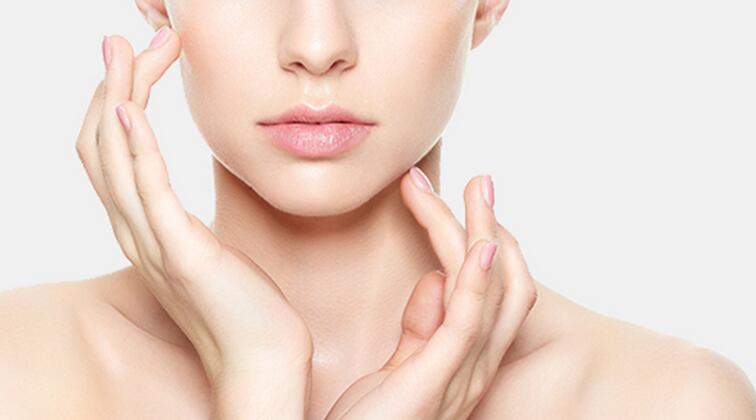
6. Massage Your Face Regularly
Facial massage can help to improve circulation and stimulate collagen production. This can reduce the appearance of wrinkles. Use your fingertips to gently massage your face in upward motions, focusing on the area around your mouth.
When massaging your face, it’s important to use a light touch and avoid pulling or tugging at the skin. You can use a facial oil or moisturizer to help your fingers glide smoothly over your skin. And take your time to focus on the areas where you have wrinkles or fine lines.
In addition to massaging your face with your fingers, you can also use tools like jade rollers or gua sha stones to help improve circulation and reduce puffiness. These tools can be especially helpful for targeting specific areas of the face, like the area above your lips.
7. Practice Facial Exercises
Facial exercises, also known as face yoga, can help to strengthen the muscles in your face and reduce the appearance of wrinkles. Try exercises like puckering your lips, smiling widely, and blowing air out of your mouth to target the muscles around your lips.
One simple exercise you can try is the “kiss and smile” exercise. Pucker your lips as if you’re giving a kiss, then smile as widely as you can while still keeping your lips puckered. Hold this position for five seconds, then relax and repeat 10-15 times.
Another exercise that can help to target the area above your lips is the “lip lift” exercise. Press your index fingers against the corners of your mouth and lift your lips towards your nose, as if you’re trying to touch your nose with your upper lip. Hold this position for five seconds, then relax and repeat 10-15 times.
8. Consider Botox Injections
Botox is a popular cosmetic treatment that works by temporarily paralyzing the muscles that cause wrinkles. When injected into the area above your lips, it can help to smooth out fine lines and wrinkles. The effects typically last for 3-4 months.
If you’re considering Botox injections, it’s important to choose a qualified and experienced provider. Look for a board-certified dermatologist or plastic surgeon who has experience administering Botox injections. And don’t be afraid to ask for before-and-after photos of their previous patients.
It’s also important to have realistic expectations about the results of Botox injections. While they can be very effective at reducing the appearance of wrinkles, they won’t eliminate them. Keep in mind that the effects are temporary. So you’ll need to get touch-up treatments every few months to maintain your results.
9. Try Dermal Fillers
Dermal fillers, such as Juvederm and Restylane, can be injected into the skin to add volume and smooth out wrinkles. They work by plumping up the skin from beneath, which can help to reduce the appearance of wrinkles above the lips. The effects can last for 6-12 months.
Like Botox, dermal fillers should only be administered by a qualified and experienced provider. Look for a board-certified dermatologist or plastic surgeon who has experience with the specific type of filler you’re interested in.
It’s also important to have realistic expectations about the results of dermal fillers. While they can be very effective at adding volume and smoothing out wrinkles, they won’t eliminate them. Keep in mind that the effects are temporary, so you’ll need to get touch-up treatments every 6-12 months to maintain your results.
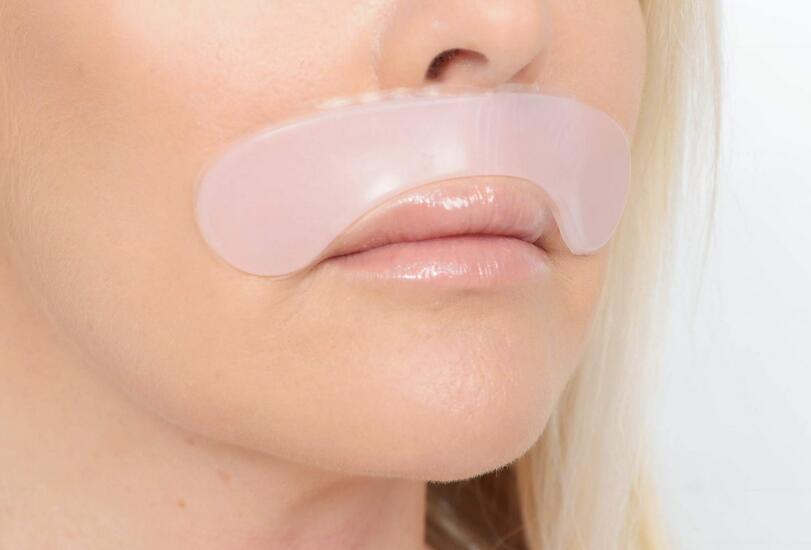
10. Consider Laser Resurfacing
Laser resurfacing is a cosmetic procedure that uses a laser to remove the outer layers of skin, revealing smoother, younger-looking skin underneath. It can be effective for treating wrinkles above the lips, as well as other signs of aging like age spots and uneven skin tone.
There are two main types of laser resurfacing: ablative and non-ablative. Ablative laser resurfacing is more aggressive and involves removing the outer layers of skin. While non-ablative laser resurfacing is gentler and works by heating the underlying skin tissue to stimulate collagen production.
If you’re considering laser resurfacing, it’s important to choose a qualified and experienced provider. Look for a board-certified dermatologist or plastic surgeon who has experience.
It’s also important to have realistic expectations about the results of laser resurfacing. While it can be very effective at improving the overall texture, it won’t eliminate wrinkles or other signs of aging. Keep in mind that there is some downtime associated with laser resurfacing, so you’ll need to plan accordingly.
11. Try Microneedling
Microneedling is a minimally invasive procedure that involves using tiny needles to create micro-injuries in the skin. This triggers the body’s natural healing response, which can help to stimulate collagen production and reduce the appearance of wrinkles. It can be done at home with a derma roller or by a professional in a clinic setting.
If you’re considering microneedling, it’s important to choose a high-quality device and follow the instructions carefully. Look for a derma roller with needles that are at least 0.5mm in length. Make sure to sterilize the device before each use.
If you’re getting microneedling done by a professional, look for a qualified and experienced provider who uses sterile equipment and follows proper safety protocols. And don’t be afraid to ask questions about their training and experience.
It’s also important to have realistic expectations about the results of microneedling. While it can be effective at improving the overall texture and appearance of your skin, it won’t eliminate wrinkles or other signs of aging.
12. Maintain a Healthy Lifestyle
Finally, maintaining a healthy lifestyle can go a long way in preventing and reducing wrinkles above the lips. This includes eating a balanced diet rich in fruits and vegetables, getting enough sleep, managing stress, and avoiding smoking and excessive alcohol consumption.
When it comes to your diet, focus on foods that are high in antioxidants, like berries, leafy greens, and citrus fruits. These foods can help to protect your skin from free radical damage and promote collagen production.
Getting enough sleep is also crucial for maintaining healthy skin. Aim for 7-9 hours of sleep per night. Try to establish a consistent sleep schedule to help regulate your body’s natural rhythms.
Managing stress is another important factor in preventing and reducing wrinkles. Chronic stress can lead to inflammation in the body. This can break down collagen and elastin in the skin. Try stress-reducing techniques like meditation, deep breathing, or yoga to help keep your stress levels in check.
Finally, avoiding smoking and excessive alcohol consumption is crucial for maintaining healthy skin. Both of these habits can contribute to premature aging and wrinkles. So it’s best to avoid them altogether if possible.
13. Chemical Peels
Chemical peels are a popular treatment option for reducing the appearance of wrinkles above the lips. They work by removing the outer layers of damaged skin, revealing smoother, more youthful-looking skin underneath[3].
There are different types of chemical peels, ranging from superficial to deep. Superficial peels, like glycolic acid or lactic acid peels, are gentler and require less downtime, while deeper peels, like phenol peels, are more aggressive and require a longer recovery period.
When considering a chemical peel for lip wrinkles, it’s important to choose a qualified and experienced provider who can help you determine the best type of peel for your individual needs and goals. Keep in mind that you may need multiple treatments to achieve your desired results.
14. Topical Retinoids
Topical retinoids, like tretinoin and retinol, are another effective treatment option for reducing the appearance of wrinkles above the lips. They work by increasing collagen production and cell turnover. This can help to smooth out fine lines and wrinkles.
Retinoids are available in both prescription and over-the-counter formulations. Prescription retinoids, like tretinoin, are stronger and more effective, but they can also be more irritating to the skin. Over-the-counter retinoids, like retinol, are gentler and less likely to irritate, but they may take longer to produce visible results.
When using a topical retinoid for lip wrinkles, it’s important to start slowly and gradually increase your usage over time. Begin by applying a small amount of the product every other night, and if your skin tolerates it well, you can gradually increase to every night. It’s also important to use a moisturizer in conjunction with your retinoid, as they can be drying to the skin.
With consistent use, topical retinoids can help reduce the appearance of wrinkles above the lips and improve the overall texture and tone of your skin. But keep in mind that it may take several weeks or even months to see visible results, so patience is key.
Conclusion
There are many effective treatments available for reducing the appearance of wrinkles above the lips. The key is to find the right combination of treatments that work for you and your unique skin concerns. Don’t be afraid to experiment with different products and techniques until you find what works best for you. And remember, the earlier you start taking care of your skin, the better your results will be in the long run.

